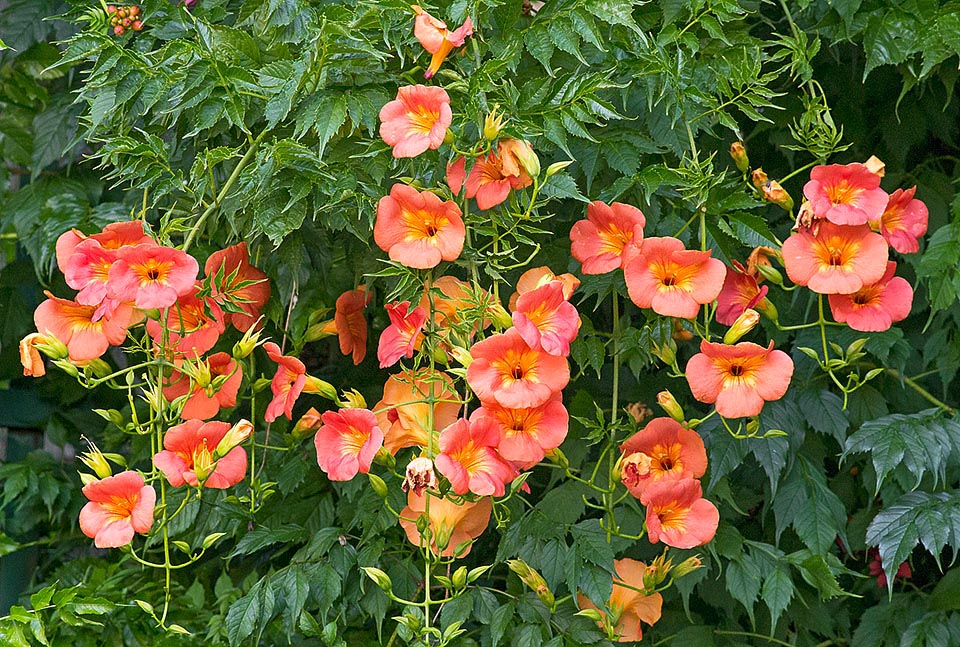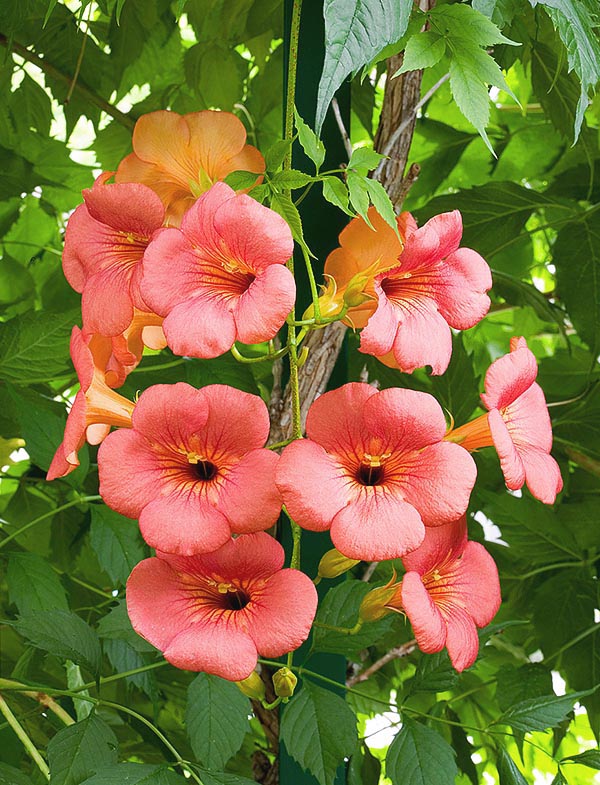Family : Bignoniaceae

Text © Pietro Puccio

English translation by Mario Beltramini

Campsis grandiflora is a woody climber with deciduous leaves native to China. Requires lot of sun but in winter resists to -10 °C © Giuseppe Mazza
The Campsis grandiflora (Thunb.) K. Schum. (1894) is native to China and precisely to the provinces of Fujian, Guangdong, Guangxi, Hebei, Shandong and Shanxi.
The name of the genus comes from the Greek “kampé” = bent, with reference to the bent stamens; the name of the species is the combination of the Latin words “grandis” = large and “floreo” = to bloom, with obvious signification.

Showy inflorescences with 8-12 campanulate flowers of 5-8 cm of diameter. Medicinal virtues © G. Mazza
Common names: “ling xiao” (Chinese); “Chinese trumpet-creeper”, “trumpet creeper”, “trumpet vine” (English); “bignone à grandes fleurs”, “bignone de Chine” (French); “Trompetenblume”, “Klettertrompeten”, “Rote Trompeten” (German); “trompeta china” (Spanish); “trombeta-chinesa” (Portuguese).
Sturdy, deciduous, woody climber, it shows imparipinnate leaves of a dark green colour, long up to about 30 cm, with 7-9 ovate-lanceolate leaflets long up to 7 cm, with jagged margins. The terminal inflorescences carry 8-12 bell-shaped flowers of orange-red colour, long up to about 10 cm and with a diameter of 5-8 cm; the fruits are capsule long up to 15 cm, containing many flat and winged seeds. It reproduces by seed, woody cutting in summer, root cutting in winter, air and ground layering.
Plant of great ornamental value, can be cultivated also in the cold-temperate areas, as it can resist, during the vegetative rest, to temperatures even of -10°C. It is not much demanding for what the soil is concerned, but is to be placed in full sun, for getting an abundant blooming.
The plant is known also for its curative properties in the traditional medicine, recently they have found in the flowers the presence of antioxidant and anti-inflammatory properties and in the leaves some compounds with an action similar to the one the acetylsalicylic acid has on the platelets.
Synonyms: Sinonimi: Bignonia grandiflora Thunb. (1783); Bignonia chinensis Lam. (1785); Campsis adrepens Lour. (1790); Tecoma chinensis (Lam.) K. Koch (1872); Campsis chinensis (Lam.) Voss (1894); Tecoma grandiflora (Thunb.) Loisel. (1821).
